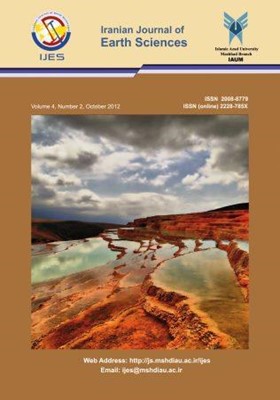Evaluation of the Paleocene-Eocene deposits, Jahrum Formation, base on 2-D seismic data, Central Persian Gulf
Subject Areas : MineralogyNaser Abdi 1 , Hossain Rahimpour-Bonab 2 , Sayyed Reza Moussavi-Harami 3 , Iraj Abdollahi Fard 4 , Davood Jahani 5 , Ali Chehrazi 6
1 - PhD Student, Department of Geology, Science and Research branch, Islamic Azad University, Tehran, Iran
2 - Department of Geology, Science faculty, Tehran University, Tehran, Iran
3 - Faculty of Science, Ferdowsi University of Mashhad, Mashhad, Iran
4 - NIOC Exploration Directorate, Tehran, Iran
5 - Department of Geology, North Tehran Branch, Islamic Azad University, Tehran, Iran
6 - NIOC, IOOC, Tehran, Iran
Keywords:
Abstract :
The Persian Gulf is part of an asymmetric foreland basin related to the Zagros Orogen. It has been episodically flooded for much of its history which are reflected in sedimentary successions. The evaluation of this succession from depositional trend view, in central Persian Gulf during Paleocene-Eocene, is the aim of this article. The sedimentary rocks physical characteristics effects on seismic data, gives an appearance to the data, which can be a key factor for their evaluation. The reflectors geometry and terminations have been used for their interpretation. The current study the uses seismic data beside drilling wells data, including cutting description and logs. The study result shows progradation toward northeast, the direction in which the accommodation space is increasing. The sedimentary environments changes to lagoon, platform and basin which affect the deposits. These environments demonstrate suitable condition for carbonates and evaporites precipitation, in Jahrum Formation, which are approved by cutting ription. The sediments extension and its trend show high thickness of Paleocene-Eocene deposits in north west of the study area, where the basin is deeper. In some intervals the thickness of sediments is decreased in deep basin, due to sediment starvation.


